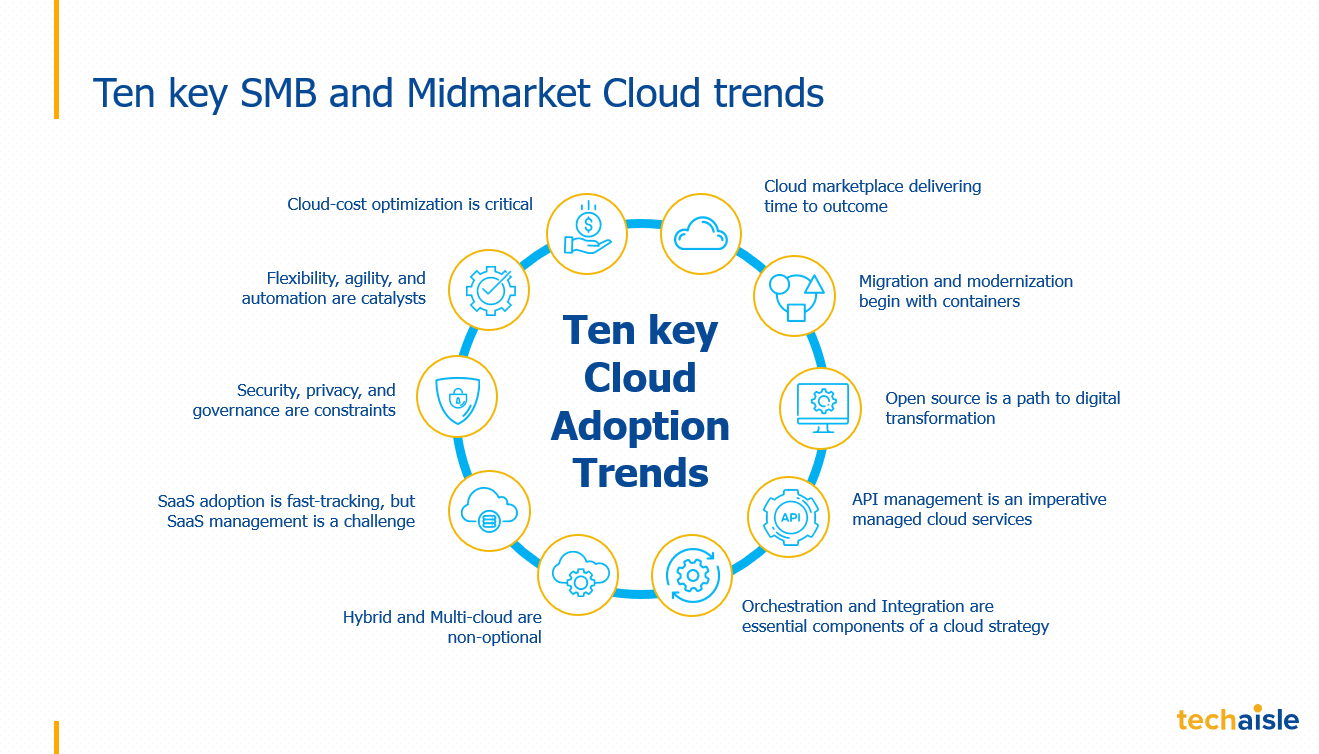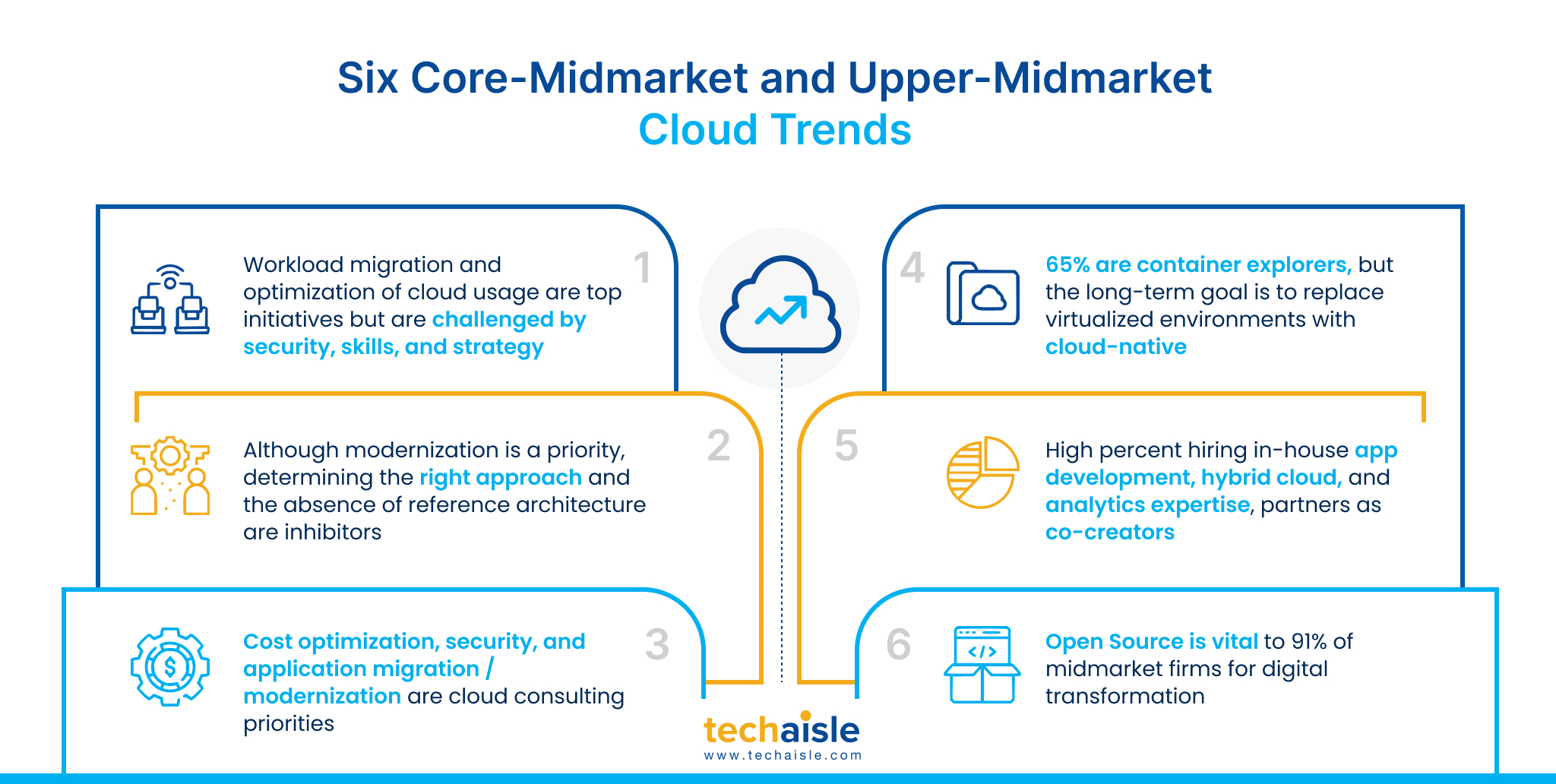Techaisle’s research of 2150 SMB, core midmarket, and upper midmarket firms reveals ten key cloud trends. The importance of cloud cost optimization, automation, and orchestration cannot be understated. Techaisle’s research of 2150 SMB, core midmarket, and upper midmarket firms reveals ten key cloud trends. The importance of cloud cost optimization, automation, and orchestration cannot be understated. Techaisle survey data shows that cloud cost optimization has moved from 2nd priority to 1st in cloud initiatives for 59% of SMBs and 55% of upper midmarket firms. In addition, it is the top consulting services priority for 100% of firms.
The explosion in cloud use has led to considerable increases in the extent of automation within SMBs and midmarket firms. SMBs are absorbing cloud systems at a very rapid rate: many core infrastructure requirements, systems of record, and systems of engagement either are or soon will be cloud-based, and the cloud is paving the way for new automation in these areas, and in systems of insight (analytics) within SMBs.

As cloud applications proliferate, the demand for hybrid IT – integrating multiple delivery sources into a single, unified fabric so that workloads can be assigned to the best (rather than ‘best possible today’) location and that data and critical services (notably, security) can be connected across platforms, is becoming a pressing requirement for SMBs. Moreover, the need for capable hybrid architecture and management is only becoming more acute over time: and Techaisle expects hybrid momentum in the SMB market to grow in 2023 and beyond.

It was once thought that cloud would reduce the technology deficit SMBs face relative to larger firms – but it is difficult to say that this has proved to be the case. Indeed, the cloud has lowered the barriers to adopting new systems, giving SMBs access to applications and infrastructure resources that would have been well beyond their means five years ago. However, cloud and hybrid IT have posed other challenges: difficulties in integrating systems with each other and with business processes, and in integrating data across applications (ensuring that data that is created by one application is input automatically into others); difficulty in securing systems that are based in multiple locations and managed by multiple organizations, each with their own set of operational rules; difficulty in applying appropriate levels of security and governance to an ever-expanding pool of data that moves at accelerating pace through an ever-more-complex constellation of systems, users, and locations. Large organizations have IT teams that are dedicated to addressing specific issues within this shifting and complex set of requirements; SMBs, rely on limited internal resources (often, small groups of generalists), supplemented by fractional headcount support from third-party channel members, to keep pace with the change that results from/is enabled by the constant advance of cloud and hybrid.